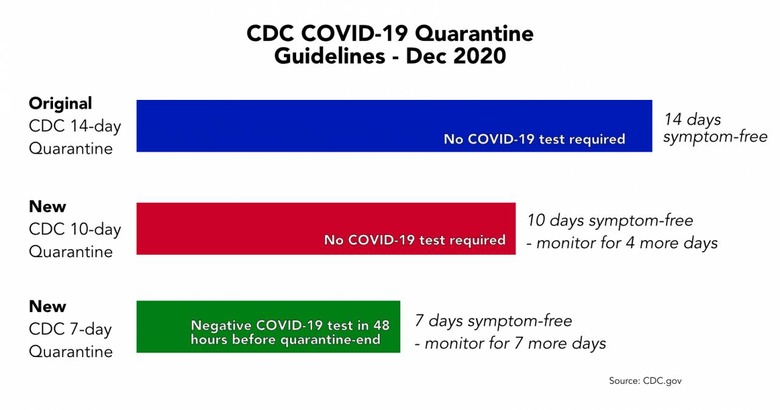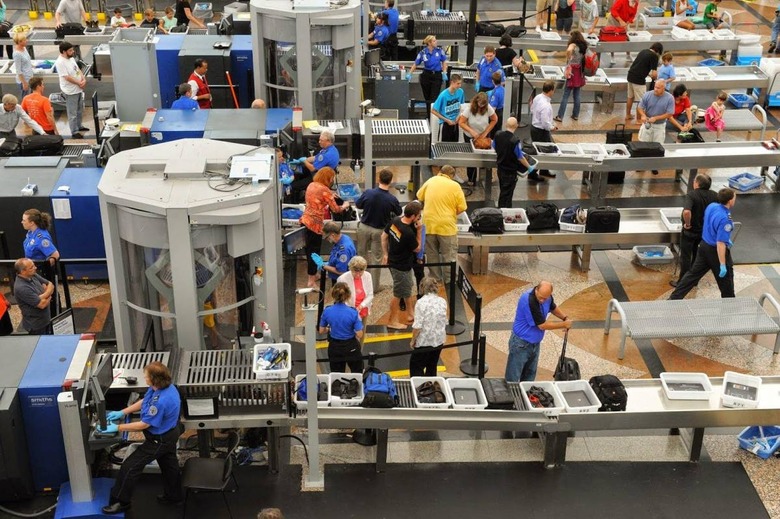CDC COVID-19 Quarantine Cut - Two Shorter Options You Should Know
The CDC has changed its rules on how long you should quarantine with a suspected COVID-19 case, in some cases halving the amount of time, despite coronavirus deaths and hospitalizations setting a new, ominous milestone. So far, the generally-accepted advice from the US Centers for Disease Control has been a 14 day COVID-19 quarantine, but new guidance has opened some loopholes in that.
Speaking this week, Dr. Henry Walke, Incident Manager for the CDC's COVID-19 response, said that the agency had been reviewing and analyzing new research and modeling data that had been gathered during the ongoing pandemic. From that, Walke suggested, "two acceptable alternative quarantine periods" had been identified, to sit alongside rather than replace the current 14 day recommendation.
Quarantine, the CDC says, could now end after 10 days without a COVID-19 test, if the person has reported no symptoms. Alternatively, and even more rapidly, quarantine could end after 7 days assuming a negative test result, again if the person reported no symptoms.
"People should still watch for symptoms during quarantine for a full 14 days after exposure," Walke highlighted, "especially if quarantine is discontinued early."

The change in policy comes amid rising criticism from some quarters that the impact on the economy of pandemic mitigation remains too significant. While controversial, many US states still do not have isolation protocols that fall in line with CDC recommendations. That, along with the absence of a second round of either stimulus checks or business loans, has led to serious concerns as the holidays approach.
"Reducing the length of quarantine may make it easier for people to take this critical public health action by reducing the economic hardship associated with a longer period," Walke confirmed, "especially if they cannot work during that time. In addition, a shorter quarantine period can lessen stress on the public health symptom and communities especially when new infections are rapidly rising."
Even so, the new guidance does also mean accepting extra risk. "In the situation where quarantine is reduced to ten days," Dr. John Brooks, the Chief Medical Officer for CDC's COVID-19 response, says, "we calculate that the residual risk is about 1-percent and that the upper limit of that risk is about 12-percent."
"for the seven-day quarantine," Dr. Brooks says, "the residual risk with a test that's negative is about 5-percent. And the upper limit is around 10-percent. The test [is] collected within 48 hours of the anticipated time of discharge and we hope that helps people with test delays."
Walke also reiterated that wearing masks, following social distancing protocols, and regularly washing your hands is essential. That will remain the case even as vaccine candidates for COVID-19 begin distribution, since it will take some time before those drugs are widely adopted.
CDC COVID-19 testing advice for winter travel
With the holidays approaching, the CDC's advice for Americans remains to avoid travel if at all possible. Still, recognizing that not everyone will be able to postpone or cancel their holiday travel plans, the agency does have some guidance for how to do it as safely as possible.

"If you do decide to travel," Dr. Walke says, "CDC recommends that travelers consider getting tested one to three days before travel and then again three to five days after travel and this should be combined with reducing nonessential activities for a full seven days after travel."
That reduction of "nonessential activities" after traveling should be done even if the test result is negative, the CDC highlights.
Part of the agency's concern is that the predicted surge of cases following Thanksgiving travel in the US is still yet to show up, due to the infection's incubation period, potentially leading people to assume that travel is safer than it actually is. "We would expect to see ... a tick up in cases, seven to ten days basically after that holiday," Dr. Walke says.
According to the CDC, there have now been almost 270,000 deaths in the US from COVID-19, with more than 178,000 new cases observed each day. There are now more than 13.6 million total cases in the country.
